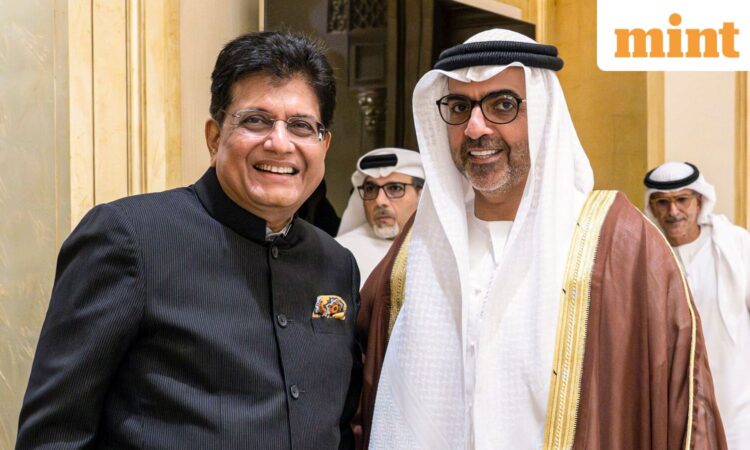
New Delhi: India and the United Arab Emirates (UAE) are exploring fresh cooperation in the space and maritime sectors as part of efforts to broaden their fast-growing economic partnership.
The plan was discussed at the 13th meeting of the high-level joint task force on investments, which met in Abu Dhabi and was co-chaired by commerce and industry minister Piyush Goyal and Sheikh Hamed bin Zayed Al Nahyan, managing director of the Abu Dhabi Investment Authority, the ministry said in a statement on Thursday.
The forum, created in 2013 to deepen investment ties and address investor concerns, has emerged as a key platform for channelling capital flows between the two economies. The latest discussions also reviewed progress on existing projects such as Bharat Mart, a 2.7 million sq ft trading hub being developed at the Jebel Ali Free Zone, to showcase Indian products to global buyers, the ministry said.
The meeting came at a time when bilateral non-oil trade is showing strong momentum under the Comprehensive Economic Partnership Agreement (CEPA) signed in 2022. In the first half of 2025, non-oil trade between the two countries rose 34% year-on-year to nearly $38 billion, marking a major step towards the UAE’s 2030 trade targets.
Market access
CEPA has expanded market access for Indian textiles, food products, and engineering goods while giving the UAE a stronger foothold in Asia’s second-largest market.
Both delegations also took stock of ongoing initiatives to settle trade in local currencies, integrate payment systems, and explore the use of Central Bank Digital Currencies, the ministry said. Work is already underway on linking India’s Unified Payments Interface (UPI) with UAE platforms, a move expected to cut transaction costs and reduce exchange rate risks for businesses, it said.
At the meeting, Goyal highlighted that India’s rapid economic expansion creates opportunities for UAE investors across infrastructure, renewable energy, and advanced sectors such as space technology. Sheikh Hamed described the partnership as anchored in “shared goals and joint success” and said the task force will remain central to driving the relationship forward.
The meeting also addressed investor concerns, with both sides agreeing to resolve them quickly through coordination among government agencies.
Read more: Centre weighs pilot e-commerce inventory model with UK under FTA, Gujarat to serve as local base
For India, the UAE is its third-largest trading partner and a major source of foreign direct investment (FDI) in sectors ranging from energy to ports. For the UAE, investing in India offers a hedge against oil reliance and a gateway to broader Asian markets. With the addition of space and maritime cooperation to the agenda, the relationship is now evolving beyond trade and finance into long-term strategic collaboration.
Mint reported on 8 September that India’s commerce ministry is moving to soften the 50% US tariff blow by redirecting exports to trusted partners such as Singapore and the UAE.
Bilateral trade between India and the UAE surged to $99.7 billion in FY25—$36.3 billion in exports and $63.4 billion in imports—from $83.6 billion in the year before and $84.8 billion in FY23, commerce ministry data showed.
India’s export portfolio to the UAE includes refined petroleum products, chemicals, and gems and jewellery. Other significant exports include pharmaceuticals, textiles, garments, and agricultural products such as rice, pulses, and spices. Imports are dominated by crude oil and petroleum products, along with liquefied natural gas (LNG).




